10 Best Low Code Development Platforms for Improvement in 2025
- TECHVIFY Team
- 0 Comments
Low-code app development platforms are reshaping software development, allowing organizations to efficiently and swiftly create applications. These platforms streamline the creation process and accelerate digital transformation, positioning them as essential tools in 2024 and beyond.
- More than 50% of medium to large businesses are estimated to adopt low-code development platforms as their principal application platform by 2024, according to Gartner.
- By 2030, the low-code industry is projected to generate $187 billion in revenue.
- Over 65% of all application development activities will involve low-code tools by 2024.
- By 2023, it is expected that over 500 million apps and services will have been developed using cloud-native methods.
Best low code development platforms feature graphical user interfaces that facilitate rapid code production and significantly reduce the time and effort involved in traditional programming.
These platforms define the future of software development, empowering users with minimal coding knowledge to develop applications efficiently using intuitive interfaces and pre-built components.
Here is a list of the most popular low code platforms for 2024 designed to help enterprises quickly and effectively embrace digital transformations.
10 Best Low Code Development Platforms You Have to Know
1. Appian
Appian provides comprehensive process automation through low-code development tools, making it one of the best low code development platforms, encompassing process mining and data fabric.
The review of Appian’s case management features focused on its capacity to address exceptions in ad-hoc processes and robotic process automation (RPA). For instance, RPA bots can transfer tasks, and Appian then creates a comprehensive audit trail for later analysis and process enhancement.
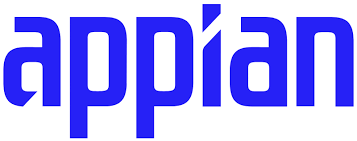
Key Features:
The features that distinguish Appian’s case management include merging data from various sources for real-time analytics and reports and automating repetitive tasks across multiple stakeholders.
Appian offers built-in integrations with SAP, AWS, and Salesforce and an API for connecting additional solutions.
Pricing: Starts at $2 per user per month
Free plan available
Pros:
- Advanced process automation
- Strong case management tools
- Comprehensive security across the platform
Cons:
- Challenges with the integrated database systems
- Limited options for custom reports and data visualization
Read more articles about low code development method here:
2. Studio Creatio
Studio Creatio is an app builder created by Creatio, providing CRM and industry-specific workflow solutions for business users.
Its business process management (BPM) tools effectively outline business processes and strategies. It fully supports the Business Process Model Notation (BPMN) 2.0 standard, allowing for complete process diagramming from beginning to end without the need for external tools.
Key features of Studio Creatio that support BPM include collaborative tools available through an organization account. These tools facilitate editing, administration, and the distribution of invitations to team members, ensuring involvement of key stakeholders in process design. The platform also allows for the import and export of process diagrams, simplifying transitions to the platform or integration with external entities.
Studio Creatio integrates with Mailchimp, Google Calendar and Contacts, Tableau, Microsoft Outlook and Office apps, Twitter, Pentalo, and Brandwatch.

Pricing: Starts at $25 per user per month.
A free plan is available.
Pros:
- Built-in BPMN 2.0 functionality.
- Extensive CRM features.
- Thorough workflow management capabilities.
Pros:
- Inconsistent performance.
- Insufficient documentation.
3. Mendix
Mendix, a top low code platform for businesses, offers tools like enterprise app development, workflow automation, and updating old systems.
Mendix’s website highlights its Agile support, and the Epics feature supports this claim. Epics, a project management tool within Mendix, enables team organization using Scrum or Kanban methods. It features customizable workflows with stages including backlog, refinement, to-do, in-progress, testing, and done.

Key Features: Beyond Epics, its polls are useful for gathering specific feedback. The platform is open and adaptable, allowing integration with existing Agile tools, including test automation, CI/CD pipelines, and older systems via connectors.
Mendix integrates seamlessly with SAP, Microsoft Azure and Teams, AWS, Salesforce, Google Cloud, and IBM Cloud. It also offers an API for creating custom solutions called connectors.
Pricing: Starts at $60/month
Free version available
Pros:
- Built-in project management tools
- Supports genuine Agile development
- The open platform allows for custom integrations
Cons:
- Less cost-effective for small teams
- May experience performance issues
4. Nintex
Nintex provides low-code automation tools that include a drag-and-drop interface and pre-built templates.
The Nintex Automation Cloud platform offers process automation capabilities effective for handling complex workflows. It manages processes in communications, records, and content systems on a large scale.

Key Features: The process mapping feature is particularly useful, showing all current workflows and enabling modifications in a comprehensive view.
The platform includes robotic process automation (RPA) for automating routine tasks like document creation and e-signatures, which helps eliminate workflow delays.
Nintex integrates with Azure AD Groups, Amazon S3, Google Translate, Openweather, Accuweather, Outlook, Slack, Smartsheet, Signiflow, and Bacon Ipsum.
Pricing: Starts at $2,083 per month (billed annually).
A 30-day free trial is available.
Pros:
- Quick response from the support team
- Strong automation capabilities
- Thorough onboarding process
Cons:
- Difficult learning curve
- High cost
5. Caspio
Caspio is a low-code development platform focused on database applications for businesses, emphasizing strong customer support.
Throughout the testing period with Caspio, support was readily available, whether from customer service or technical consultants. The company offers multiple customer service lines, including local numbers for major markets like the Americas, Asia-Pacific, and Europe. The support can be crucial for those unfamiliar with low-code platforms and may justify the cost.

Key Features: The platform includes a comprehensive onboarding process involving direct collaboration with an expert team, consistent feedback, training, and coaching. It also offers project consultation sessions to help develop ideas and create a complete proposal.
Integration options through Zapier connect Caspio with many applications, such as Gmail, Mailchimp, Google Calendar and Sheets, Unbounce, Wufoo, Twilio, Calendly, Quickbooks, and MySQL.
Pricing: Starts at $127.50 per month.
Free plan available.
Pros:
- Reliable customer support
- Comprehensive onboarding process
- No per-user fees, which saves costs as usage grows
Cons:
- Steep learning curve.
- High cost for support.
Have a Project Idea in Mind?
Get in touch with experts for a free consultation. We’ll help you decide on next steps, explain how the development process is organized, and provide you with a free project estimate.
6. Power Apps
Power Apps is a low-code platform developed by Microsoft, designed to cater to businesses of various sizes.
It allows for customized solutions that augment Power BI, Pages, Automate, and Virtual Agents, enhancing business analytics, website functionality, workflow automation, and chatbot efficiency.
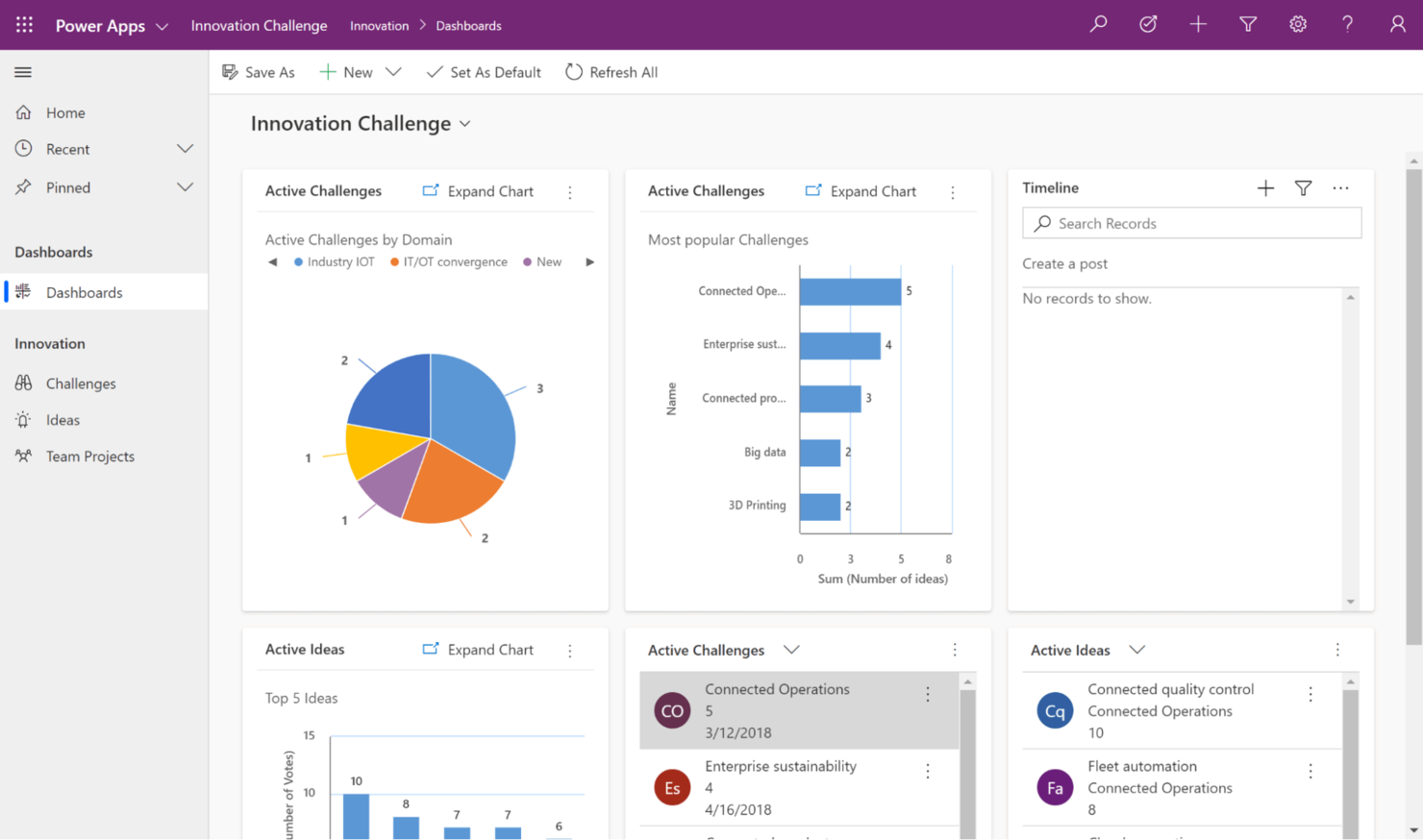
Key Features: Power Apps offers significant benefits for enterprise users, including more than 500 ready-made connectors for various business applications, all underpinned by Azure. Its intelligent automation capability suggests automated process solutions suitable for desktops, supporting both new and old systems.
The platform seamlessly integrates with Microsoft Power Platform services and supports ready-made connections with Oracle, Twitter, Dropbox, Adobe Creative Cloud, Freshdesk, Google Drive, Box, Jira, Jotform, and Slack.
Pricing: Starts at $5 per user per app per month.
30 days free trial
Pros:
- Numerous ready-made integrations
- High scalability
- Robust data governance
Cons:
- Challenges in managing formulas in custom scripts
- Occasional slow performance
7. Jotform
Jotform is known for its online forms and provides a low-code app builder for mobile and desktop applications.
Selection of Jotform Apps: Jotform has established its reputation with form building. The app builder incorporates many of these features, useful for recording input from a limited number of users. Initially, an app was created from a form and linked to Google Calendar to set up a small-scale scheduling solution.
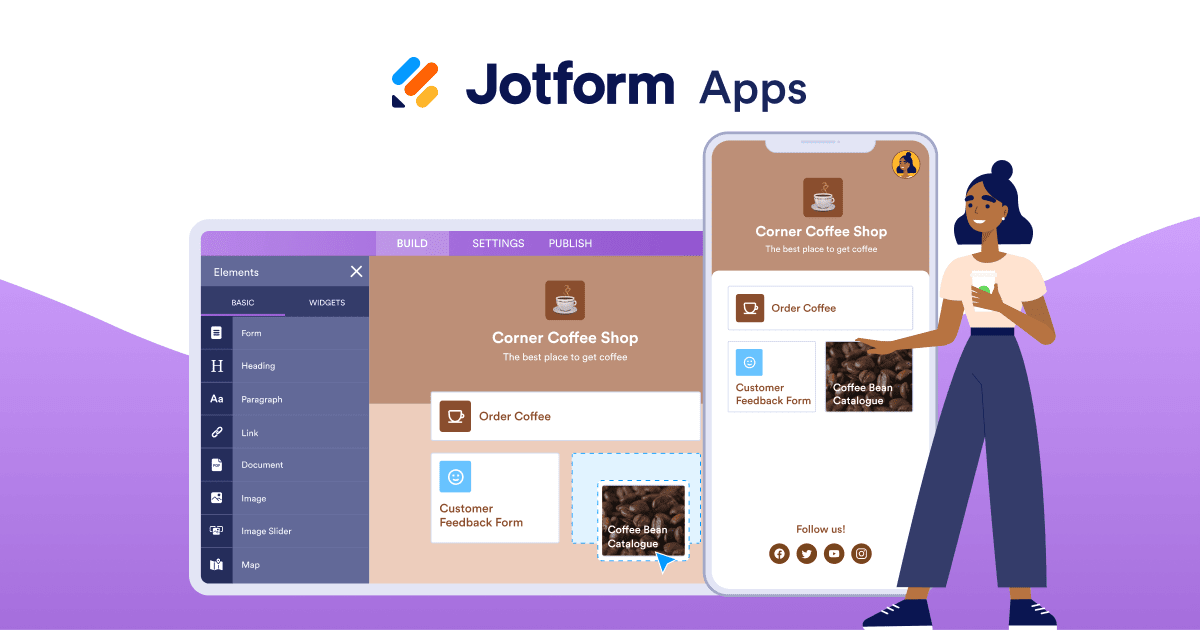
Key Features: Important features in the Jotform app include Jotform Tables, a free database functioning like a spreadsheet, useful for tracking data from all input fields and generating reports. The app can be shared via email or QR code.
Integrations include Google Calendar, Sheets, Paypal Business, Asana, monday.com, HubSpot, Airtable, Zoom, Trello, and Stripe.
Pricing: Starts at $34/month with the Jotform bronze plan when billed annually.
A free plan is available with Jotform.
Pros:
- User-friendly
- Numerous free templates
- Available for free with a Jotform account
Cons:
- Not suitable for complex applications
- Many templates appear outdated
8. Apps Script
Apps Script is a low-code development platform by Google that integrates smoothly with its various products.
It functions throughout Google Workspace and its numerous applications, making it accessible for anyone with a Gmail account to begin using it. My initial experience was using a simple script in Google Sheets to manage bulk payments.
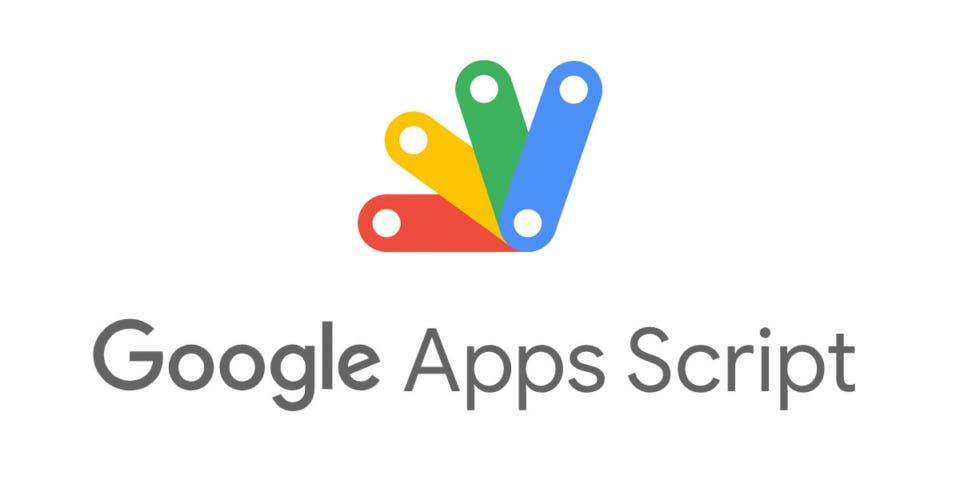
Key Features:
Key beginner-friendly features include the macro recorder, which captures functions in steps and saves them as a script for automated execution.
I appreciated the coding assistance provided by automatic suggestions and embedded mini documentation, similar to what is available in a comprehensive, integrated development environment (IDE), eliminating the need to memorize syntax.
Apps Script integrates with over 100 Google services, including Google Workspace applications, YouTube, Chat, BigQuery, and Google Analytics.
Pricing: No cost.
Pros:
- Simple to start using
- Multiple native integrations
- Completely free
Cons:
- Dependent on community support
- Limited to Google products
9. Wavemaker
Wavemaker offers a low-code platform for developing enterprise applications, primarily targeting financial institutions but also accommodating various other sectors.
The selection of Wavemaker is due to its Application Platform as a Service (aPaaS) features, which provide extensive tools for managing deployments in both cloud-based and on-premises environments. This system automates the configuration of environments with necessary dependencies, databases, and services.
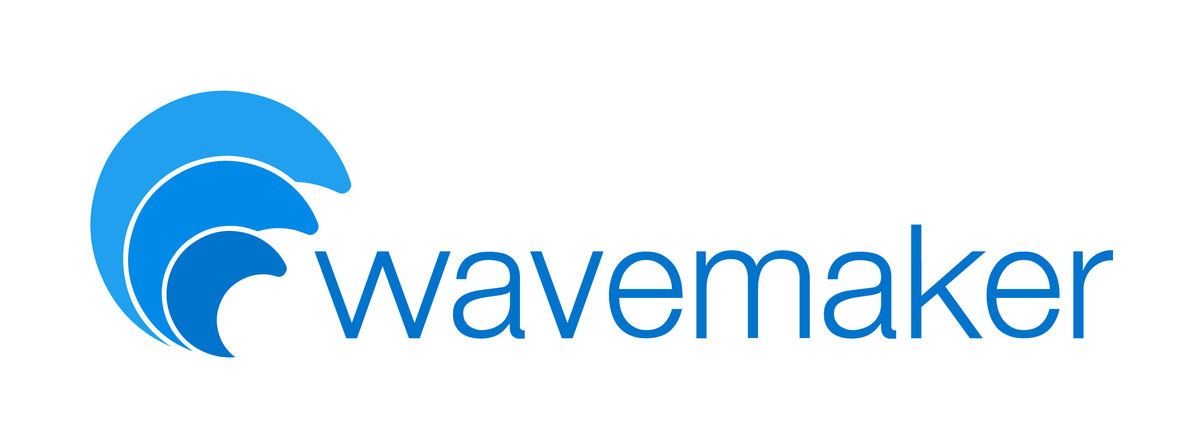
Key Features: Wavemaker’s notable features include a cloud-native design that enhances fault tolerance, scalability, resilience, and availability. It incorporates security measures compliant with standards such as SAML and SSL encryption. The platform integrates with GitHub, Sharepoint, Google Calendar, Quickbase, Bitbucket, and Yammer.
Pricing: Starts at $500 monthly, with a 30-day free trial.
Pros:
- Freedom from vendor lock-in
- React support for mobile front-end development
- User-friendly interface suitable for beginners
Cons:
- Desktop version not available
- High cost for small businesses
10. Pega
Pega is a low-code enterprise development platform that offers tools for decisioning and workflow automation.
Pega prioritizes DevOps across its products. The Deployment Manager facilitates the configuration of CI/CD workflows for projects on the platform, and it scales effectively to support various DevOps pipelines.
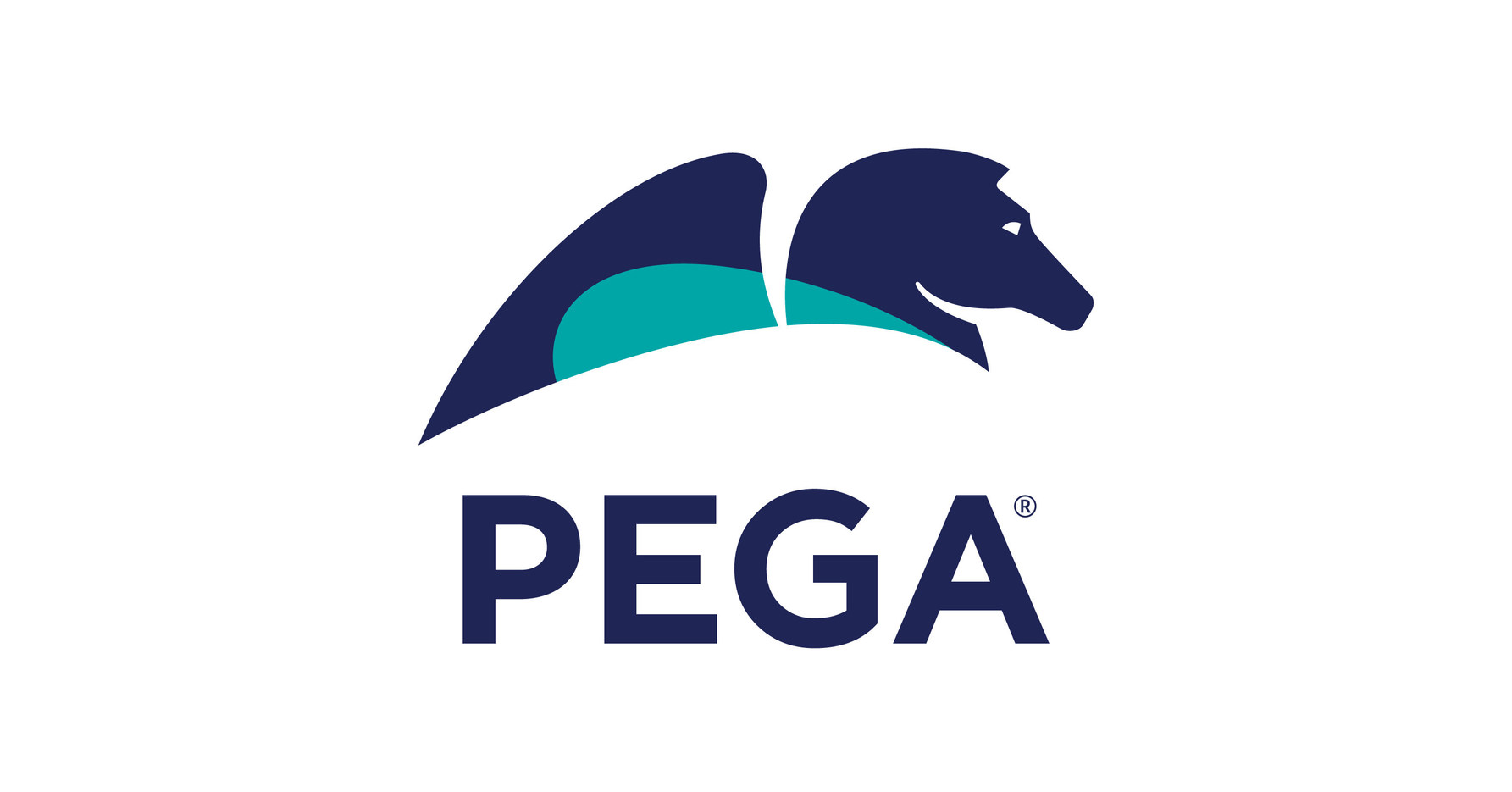
Key Features:
Recommended features for DevOps teams in Pega include the Pega API, which integrates with existing DevOps toolchains without significant process changes. PegaUnit automates unit testing and provides detailed reports to maintain consistent CI/CD workflows.
Integrations are available with SAP, Docusign, Kubernetes, Docker, Cisco, Jenkins, Box, Amazon S3, and React.
Pricing: Starts at $35 per user per month
Free trial offered
Pros:
- Facilitates advanced DevOps
- Extensive case management capabilities
- Strong process automation
Cons:
- Challenging setup
- Limited documentation
Compare Best Low Code Development Platforms
| Category | Platforms | Description |
| Process Automation and Management | Appian, Nintex, Pega | Comprehensive process automation, case management, and workflow automation, catering to businesses looking to automate complex processes. |
| Enterprise Application Development | Mendix, Studio Creator, Wavemaker | Focuses on developing robust enterprise applications, supporting agile methodologies, and offering extensive integration options. |
| Specific or Niche Solutions | Caspio, Jotform, Apps Script, Power Apps | Offers specialized solutions, such as database applications, form-based apps, or integrations, specific to ecosystems like Google or Microsoft, often with ease of use or a niche focus. |
Selection Criteria for Low Code Platforms
Here’s a brief overview of the main criteria I used to select the top low-code platforms for this review:
Core functionality:
- Governance: They should maximize utility without unnecessary complexity or excess.
- Application lifecycle management: Users should be able to handle all key software development stages, from concept to deployment, directly through the platform.
- Well-equipped development environment: Essential tools for development, such as debugging and testing, should be available within the platform.
Key features include:
- Drag-and-drop interface: This feature simplifies adding new functions, particularly on the front end.
- Templates: Helpful for straightforward project completion without extensive custom needs.
- Security: Crucial for customer-facing applications, I reviewed each platform’s security measures to ensure they protect user privacy during and after development.
Usability Considering the target audience may not be highly technical, I favored platforms that allow extensive use of graphical user interfaces (GUIs) over those requiring more command-line interaction.
Value for Price I evaluated the cost-effectiveness of these platforms for small businesses that might not have the budget for large development teams. For instance, a platform priced at $10 per user per month should offer good front-end customization and reliable back-end performance, making it suitable for a small business’s needs.
Sum Up
Choosing one from the best low code development platforms from Appian, Nintex, or Mendix,… is crucial for businesses aiming to enhance operational efficiency and drive innovation. These platforms provide essential features for process automation and agile development.
Partnering with TECHVIFY can maximize the effectiveness of these technologies. TECHVIFY offers specialized software development services that tailor these platforms to your business needs.
Elevate your business operations with expert solutions. Contact TECHVIFY today to optimize your use of leading low-code platforms.
TECHVIFY – Global AI & Software Solution Company
From Startups to Industry Leaders: TECHVIFY prioritizes results, not just deliverables. Accelerate your time to market and see ROI early with high-performing teams, AI (including GenAI) Software Solutions, and ODC (Offshore Development Center) services.
- Email: [email protected]
- Phone: (+84)24.77762.666





